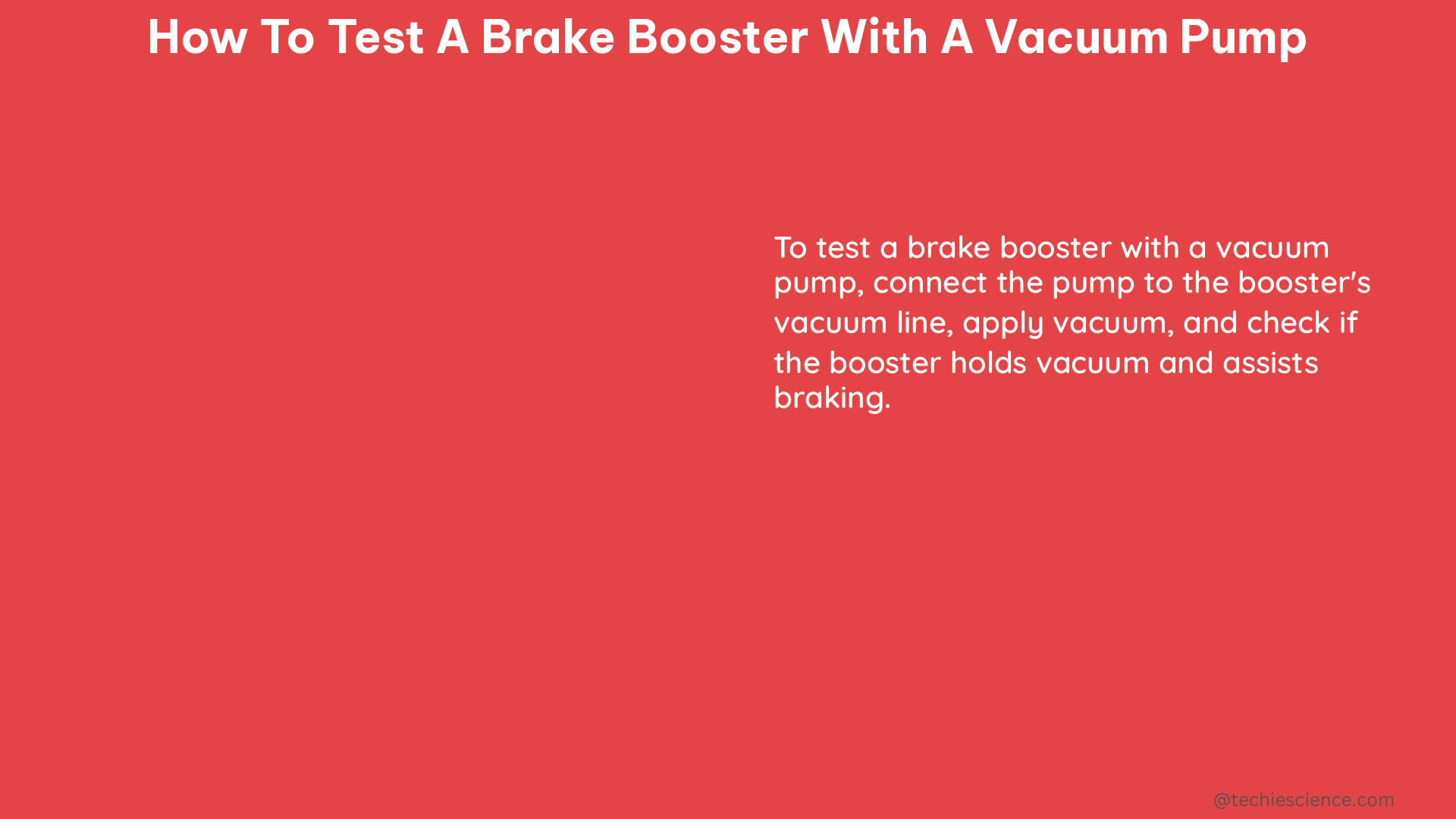Testing a brake booster with a vacuum pump is a crucial step in ensuring the proper functioning of your vehicle’s braking system. This comprehensive guide will walk you through the step-by-step process of testing a brake booster using a vacuum pump, providing you with the necessary technical details and measurable data points to ensure a thorough and accurate assessment.
Preparation and Setup
Before you begin the testing process, it’s essential to properly prepare your vehicle and the necessary equipment. Start by parking your vehicle on a level surface, engaging the parking brake, and turning on the ignition while ensuring the engine is off. This will allow you to focus on the brake booster’s performance without any interference from the engine.
Next, connect the vacuum pump to the vacuum hose that leads to the brake booster. Make sure the connection is secure and there are no air leaks, as this can significantly impact the accuracy of your measurements.
Measuring Vacuum Pressure

The first step in testing the brake booster is to measure the vacuum pressure. Turn on the vacuum pump and observe the reading on the pressure gauge. The vacuum pressure should be within the manufacturer’s specified range, which is typically between 18 and 22 inches of mercury (Hg) for most vehicles.
It’s important to note that the vacuum pressure can vary depending on the make, model, and year of your vehicle, so be sure to refer to the manufacturer’s recommendations for the specific vacuum pressure range for your vehicle.
Checking Vacuum Hold Time
After measuring the vacuum pressure, turn off the vacuum pump and observe the vacuum hold time. The vacuum pressure should hold for a certain amount of time, known as the vacuum hold time. For most vehicles, the vacuum hold time should be at least 15 seconds.
If the vacuum pressure drops suddenly or fluctuates, it may indicate a vacuum leak in the system. In such cases, you’ll need to inspect all the vacuum hoses and connections for any leaks and repair them accordingly.
Testing the Brake Pedal
With the engine off, press the brake pedal several times to build up the vacuum pressure. Then, start the engine and continue pressing the pedal. The brake pedal should feel firm, and the vacuum pressure should remain stable.
If the brake pedal feels spongy or the vacuum pressure drops, it may indicate a problem with the brake booster or the overall braking system. In such cases, further diagnosis and repair may be necessary.
Checking for Vacuum Leaks
As mentioned earlier, a vacuum leak can cause a drop in vacuum pressure or fluctuations. To check for vacuum leaks, you can use a vacuum gauge or a smoke machine to identify the source of the leak.
Start by inspecting all the vacuum hoses and connections for any cracks, holes, or loose fittings. If you find any leaks, replace the affected components or tighten the connections as necessary.
Repeating the Test
To ensure the accuracy of your findings, it’s recommended to repeat the test several times. This will help you identify any inconsistencies or anomalies in the measurements and provide a more reliable assessment of the brake booster’s performance.
Measurable and Quantifiable Data Points
When testing a brake booster with a vacuum pump, keep the following measurable and quantifiable data points in mind:
| Data Point | Typical Range |
|---|---|
| Vacuum Pressure | 18 to 22 inches of mercury (Hg) |
| Vacuum Hold Time | At least 15 seconds |
| Vacuum Leak | Sudden drop or fluctuation in vacuum pressure |
| Brake Pedal Feel | Firm when engine is running and vacuum pressure is stable |
By keeping these data points in mind and following the step-by-step process outlined in this guide, you can effectively test the brake booster of your vehicle and ensure its proper functioning.
Conclusion
Testing a brake booster with a vacuum pump is a crucial step in maintaining the safety and reliability of your vehicle’s braking system. By following the detailed instructions and keeping the measurable and quantifiable data points in mind, you can accurately assess the performance of your brake booster and identify any potential issues that may require further attention.
Remember, if you encounter any difficulties or have additional questions, it’s always best to consult with a professional mechanic or refer to the manufacturer’s recommendations for your specific vehicle.
Reference:
- How to Test an Electric Vacuum Pump
- A Test to Determine if a Brake Booster is Working
- HOW TO TEST BRAKE BOOSTER VACUUM PUMP – YouTube

The lambdageeks.com Core SME Team is a group of experienced subject matter experts from diverse scientific and technical fields including Physics, Chemistry, Technology,Electronics & Electrical Engineering, Automotive, Mechanical Engineering. Our team collaborates to create high-quality, well-researched articles on a wide range of science and technology topics for the lambdageeks.com website.
All Our Senior SME are having more than 7 Years of experience in the respective fields . They are either Working Industry Professionals or assocaited With different Universities. Refer Our Authors Page to get to know About our Core SMEs.